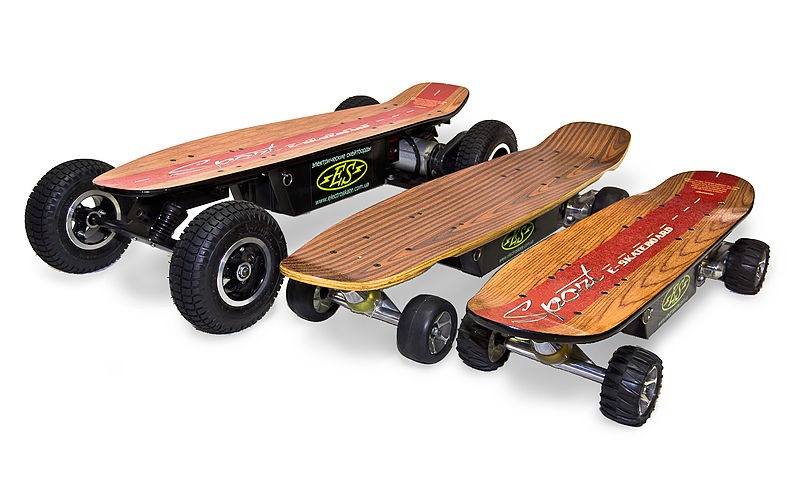Welcome to the world of electric skateboarding, where innovation meets exhilaration. Navigating the realm of electric skateboards as a beginner can be both thrilling and overwhelming, given the plethora of options available. In this comprehensive buying guide, we will steer you through the essential factors to consider when choosing the perfect electric skateboard for your needs.
Some of the most important factors to consider while selecting a new skateboard are listed in this guide. Beginners will find this information to be very helpful. Fans of advanced electric skateboards will have distinct objectives and aspirations. Consumers should always pair any buying guide with their research.
What is an Electric Skateboard?
An electric skateboard is a motorized variation of the traditional skateboard, equipped with an electric motor, battery, and a wireless remote control. These components work together to propel the skateboard without manual pushing. Electric skateboards offer a convenient and eco-friendly mode of transportation, allowing riders to cruise at varying speeds with minimal effort. They often feature different riding modes, customizable settings, and regenerative braking systems. Electric skateboards cater to a diverse range of riders, from commuters seeking an efficient way to travel short distances to enthusiasts looking for an exciting recreational experience.
Types of Electric Skateboards
This is presumably the most essential factor for the majority of customers. Electric skateboards can serve many purposes. This holds even for non-electric skateboard markets. Longboards, for example, are often used for commuting and traveling. By contrast, some boards are perfect for tricks and ramps. Choosing a longboard to do a kickflip or an ollie would be like picking up a hammer to unscrew a stuck screw. It’s simply not the appropriate instrument for the task!
If you want to commute, I recommend you check out the fastest electric skateboards. Time is a pricey commodity; we don’t want to waste it on a slow ride. The quickest electric skateboards are designed to move quickly, especially when equipped with the right wheels and a strong engine.
Luckily, many electric skateboard companies design their boards for commute and extended movement. This gets a bit more complicated than it sounds, however. Traveling through the city is different from carving up off-road trails. Other electric skateboard models also allow for different speeds. Skateboard type is an essential factor in any purchasing decision.
Commuter Electric Skateboard
Commuter electric skateboards are designed for urban travel, emphasizing portability, lightweight construction, and maneuverability. Typically equipped with a moderate range and top speed, these boards prioritize efficiency and ease of use for daily commuting. Their compact size allows riders to easily navigate crowded city streets while providing a smooth and convenient mode of transportation.
Carving Electric Skateboard
Carving electric skateboards are crafted for riders who enjoy fluid and dynamic maneuvers. Characterized by responsive trucks and flexible decks, these boards allow riders to cut and easily make sharp turns. The focus is on enhancing the carving experience, making them popular among those who appreciate the feeling of surfing or snowboarding on the pavement. Carving electric skateboards are well-suited for riders who prioritize agility and a lively riding style.
Off-Road Electric Skateboard
Off-road electric skateboards are built for adventurers who love riding on diverse terrains like dirt trails, grass, or gravel. With robust, all-terrain wheels, sturdy construction, and powerful motors, these boards handle rough surfaces. Off-road electric skateboards often feature enhanced suspension systems to absorb shocks, providing a more comfortable and controlled riding experience for those who want to explore beyond the pavement.
Long Range Electric Skateboard
Many long-range electric skateboards can be used as commuter boards as well. But some riders might want to take their boards on longer trips. Some skateboards don’t have the battery life for this kind of adventure. Others might have the battery life but use tires that could fall apart after continuous use.
Besides wheel type and battery life, top speed might be a concern. This factor depends on personal preference. Some consumers might want a long-range electric skateboard that hits high speeds. Others might enjoy a smoother, more consistent ride.
Speed Electric Skateboard
Speed electric skateboards are engineered to deliver exhilarating velocity, appealing to riders who crave the thrill of high-speed cruising. These boards often feature potent motors, aerodynamic designs, and top-tier components to achieve impressive top speeds. With a focus on performance, speed electric skateboards provide an adrenaline-fueled experience for riders who prioritize velocity and want to push the boundaries of their skating capabilities. Users must prioritize safety equipment such as helmets and pads when opting for these high-speed models.
Budget-Friendly Electric Skateboard
Budget-friendly electric skateboards cater to riders looking for an affordable entry into the electric skating world without compromising essential features. While these boards may have slightly shorter ranges or lower top speeds than premium models, they offer a cost-effective option for those exploring electric skateboarding on a limited budget. Despite their affordability, many budget-friendly electric skateboards still provide a satisfying riding experience, making them accessible to a broader audience of newcomers or casual riders who prioritize value for money.
Mini Electric Skateboard
Mini electric skateboards are characterized by their compact size and lightweight design, offering a portable and convenient solution for riders on the go. Ideal for short-distance commuting or quick rides around the neighborhood, these boards are easy to carry and store. While they may sacrifice some top speed and range compared to larger counterparts, mini electric skateboards excel in versatility and urban mobility. Their smaller form factor makes them a popular choice for riders who value portability and the ability to integrate electric skateboarding into their daily routines seamlessly.
How much do you want to spend?
This is the trickiest concern of all. Electric skateboard prices range from less than $100 to over $4,000. The amount consumers will pay for their board depends on many factors. The quality of the wheels, the battery’s strength, and the ride’s smoothness all play a role in pricing.
We recommend that users look for an electric skateboard that balances price and quality. New skateboarders should be especially cautious about overpaying for a beginner’s board. More experienced skateboarders might consider paying more for a higher-quality board.
Conclusion
Buying an electric skateboard can be overwhelming at first. Different types of boards, technical specs, and prices might complicate any purchasing decision. However, users can find the right skateboard by determining what they want from their electric board. An effective board can help consumers commute to work, carve up hills, or even go off-road.



